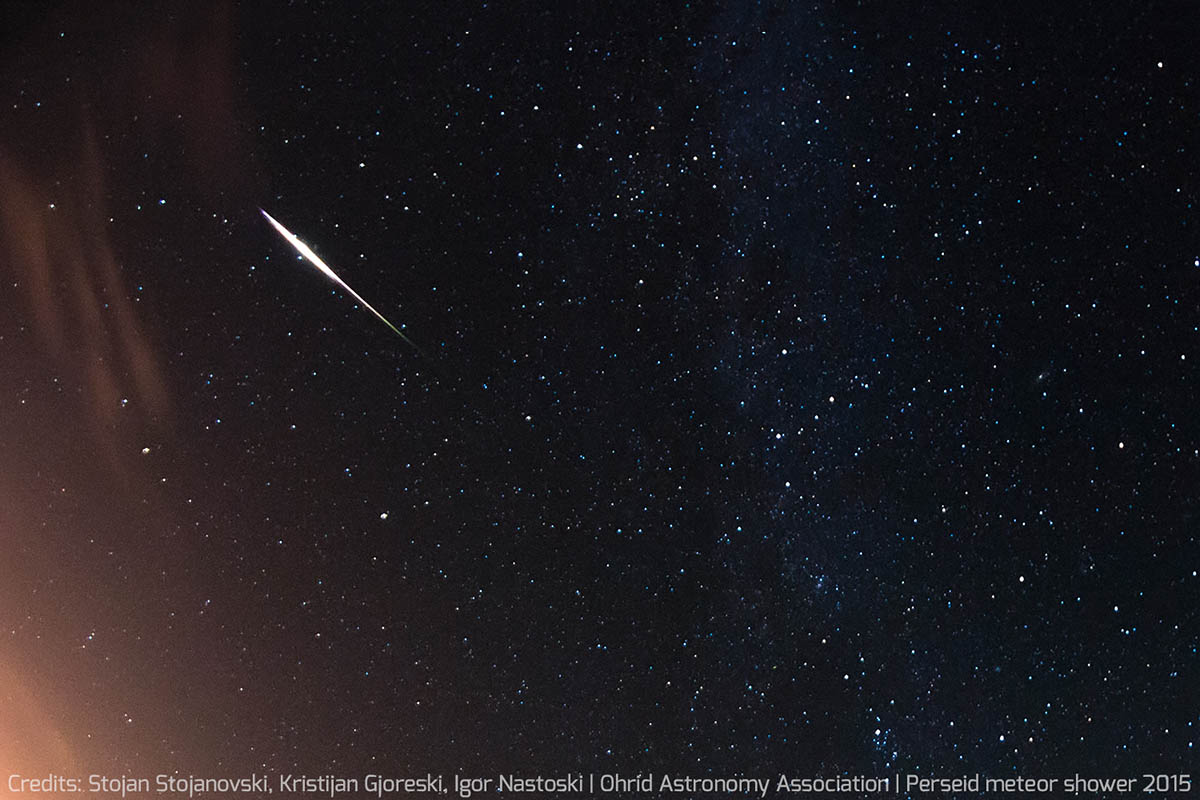

In 2021, the Orionid meteor shower peaks the night of Wednesday, October 20 and the early morning of Thursday, October 21. On peak nights, the Orionids produce up to 20 shooting stars per hour. When the meteors streak across the sky, they appear to originate from the constellation. While Haley's Comet only appears in the night sky every 74 to 76 years, the Orionids are much more frequent, occurring every year in October. As Earth passes through the comet's tail, space rocks burn up in the planet's atmosphere, creating a dazzling shooting star effect. The Orionids are a byproduct of Halley's Comet. If you plan on catching the event in 2021, here's all the information you need. The October spectacle is one of the more consistent meteor showers of the year, and it's easy to view no matter where in the world you are. All rights reserved.Even if you're a casual stargazer, you probably have heard of the Orionids. ™ & © 2021 Cable News Network, Inc., a WarnerMedia Company. It will be at its brightest until November 8. It will be at its brightest now until December 31.Īnd our most distant neighbor in the solar system, Neptune, will be visible through a telescope in the evenings now until December 31. Saturn’s rings are only visible through a telescope, but the planet itself can still be seen with the naked eye in the evenings until December 31.īinoculars or a telescope will help you spot the greenish glow of Uranus in the mornings through November 3 and in the evenings from November 4 to December 31. Look for it in the evenings from now until December 31. Jupiter, the largest planet in our solar system, is the third-brightest object in our sky. Mars makes its reddish appearance in the morning sky between November 24 and December 31. It’s the second-brightest object in our sky, after the moon.

Venus, our closest neighbor in the solar system, will appear in the western sky at dusk in the evenings through December 31. It will shine in the night sky until September 21, and November 29 to December 31. Mercury will appear as a bright star in the morning sky from October 18 to November 1. Seeing most of these - except Neptune - with the naked eye is possible, but binoculars or a telescope will provide the best view. Skywatchers will have multiple opportunities to spot the planets during certain mornings and evenings throughout the rest of 2021, according to the Farmer’s Almanac planetary guide.
#Night of the meteor game full#
The full moons and their names, according to The Old Farmer’s Almanac: Throughout the remainder of 2021, you might be able to catch these space and sky events depending on your location. Typically, it’s more common for a season to have three full moons, however this year there will be four that occur in just one season alone, between the June solstice and September equinox. It’s been a year of unusual celestial activity, with a rare third full moon, known as a Blue Moon, making an appearance in late August. That’s also due to the fact that the harvest moon is closer to the horizon, which creates a greater thickness of Earth’s atmosphere creating an orange hue, according to EarthSky. The location of this moon gives the illusion of largeness, despite not being any bigger than other full moons.Īnother quirk to the harvest moon is its color - it may look especially orange. The harvest moon may seem bigger and brighter than other full moons, and that’s because this moon is physically closer to the horizon. This year’s harvest moon will be the last of the summer season for those living in the Northern Hemisphere, while for those in the Southern Hemisphere it will be the fourth winter full moon, according to EarthSky. But when a full moon occurs near an autumn equinox, like the harvest moon, the moon rises closer to the time of sunset, creating a dusk-till-dawn moonlight for several nights in a row. Typically, the moon rises around sunset and about 50 minutes later each day, according to EarthSky. ET, 17 minutes after sunset, according to NASA.ĭuring the few days surrounding the harvest moon’s appearance, the moonrise will occur within just 25 to 30 minutes across the northern United States and only 10 to 20 minutes in farther north Canada and Europe, according to NASA. Appearing two days before the autumnal equinox this year, the full moon can first be seen at 7:55 p.m.


 0 kommentar(er)
0 kommentar(er)
